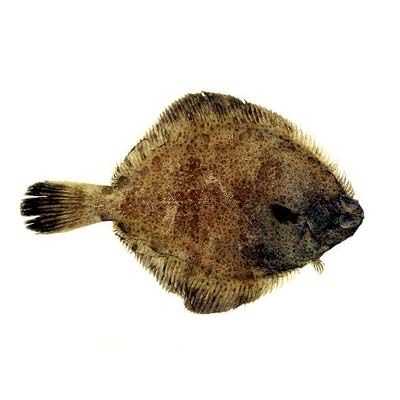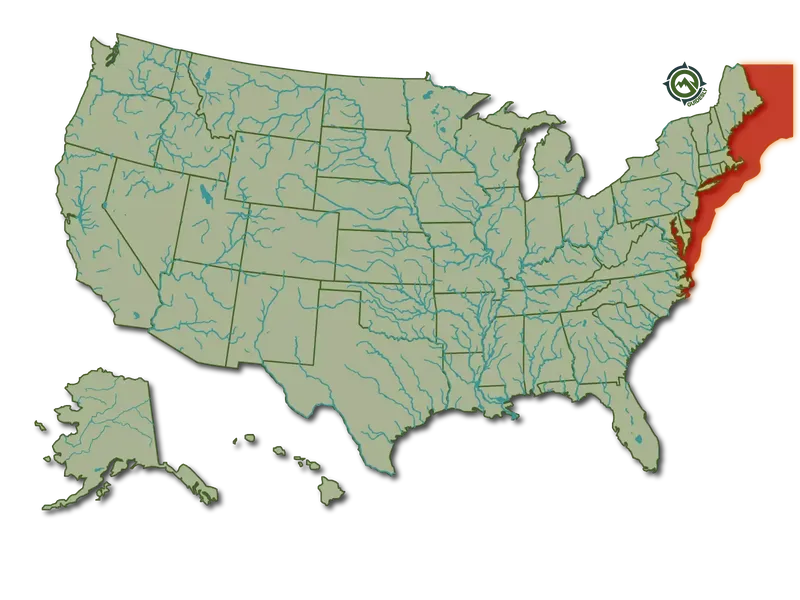Curlfin Sole

Species Details
Pleuronichthys Decurrens
Pleuronectidae
Pleuronectiformes
Deepwater, Marine
1 - 2 lbs.
9" - 15"
Curlfin Sole (Pleuronichthys decurrens) description
The curlfin sole is a flatfish with an oblong-shaped body. Its right side is the “seeing” side, which is often red-brown, dark brown, or even black, with grey splotches or mottling. The underside is the “blind side”, which is pale or white, and helps the fish remain invisible from predators on the bottom if they rise from the ocean floor.
The blind side is the starting point of the first 4-6 of its first 9-12 dorsal fin rays and it’s this feature that makes the curlfin sole similar to spotted and hornyhead turbots. All of the sole’s fins are dark-colored, and its tail is rounded or tapered. The dorsal fin originates from the lower corner of the mouth and there is an anal spine present. The lateral line rises slightly over the pectoral fin.
These soles have small heads and eyes and there is a notable bony ridge between the eyes with either a tubercle or dull spine on each end. Behind its upper eye are 2-3 extra tubercles as well.
The curlfin sole is similar in species to the English sole (Parophrys vetulus) and the C-O sole (Pleuronichthys coenosus)
Diet & Size
The diet of the curlfin sole consists mainly of bristle worms (zoobenthos polychaetes), eggs of crustaceans, brittle stars, and soft-bodied mollusks. They often rest on the bottom of the bed during the day and actively feed at night. The curlfin sole is a small fish but can reach up to 15 inches in length, and weigh up to 1.71 lbs. Females can grow as much as two times larger than males, and live longer.
Interesting facts about the Curlfin Sole
- Flatfish begin their lives as ordinary swimming fish. As they mature, their eyes move to one side of their head, and their bodies flatten.
- The sole swims with anguilliform locomotion or eel-like movement moving its entire body in a wave-like fashion from head to tail
- Curlfin soles are occasionally caught as by-catch by commercial harvesters using otter-trawls.
- The Dover sole and lemon sole in the UK, relatives of the curlfin sole are considered delicacies
- The soles are considered Kings of the Sea in Europe
Fishing Techniques: How To Catch a Curlfin Sole
Soles rest on the bottom and are camouflaged to mimic the floor’s color and texture, often lying in wait during the day. They often feed more and come close to the shore at night. Anglers must remember that soles are not active hunters and that both their eyes are pointing upwards towards the water’s surface. This means that bait must hover over the fish on the bottom.
The best live baits to use when fishing for a sole is usually worms, such as lugworms and ragworms. Anglers can use both live and strip baits with line weights to help bait sink near the bottom while drift fishing along the sole’s known feeding grounds.
Using a specialized flatfish rig with a 60lb line is the best option since they feature three separate hooks attached by snoods that allow three varying baits to be used. By using this rig, you can quickly pinpoint which bait is most attractive to the curlfin sole.
Flatfish and soles are often lured to the movement of beads, sequins, and spoons in the water so you can attach any of these to the snoods. Using a size 2-6 hook with a flatfish rig is recommended since soles have small mouths. For the weights, attach a few 1/2 to 1/4 ounce drilled bullets.
Habitat and Distribution

There are two different Lemon Soles: one in North America, and one in Europe, and they are not related nor the same. The curlfin sole belongs to the American family of soles.
The curlfin sole is a subtropical fish often found in the California Current Ecosystem, which is eastern Pacific waters, from Prince William Sound, Alaska in the north to San Quintín, Baja California in the south. They have been reported in some areas of Mexico and Canada as well.
It’s a marine, bottom-dwelling fish that prefers soft, sandy beds at depths of between 26 - 1,740 feet. They are most abundant in zones above 300 feet. The curlfin sole spawns from April to August, and their spherical, transparent eggs hatch within seven days of fertilization.







